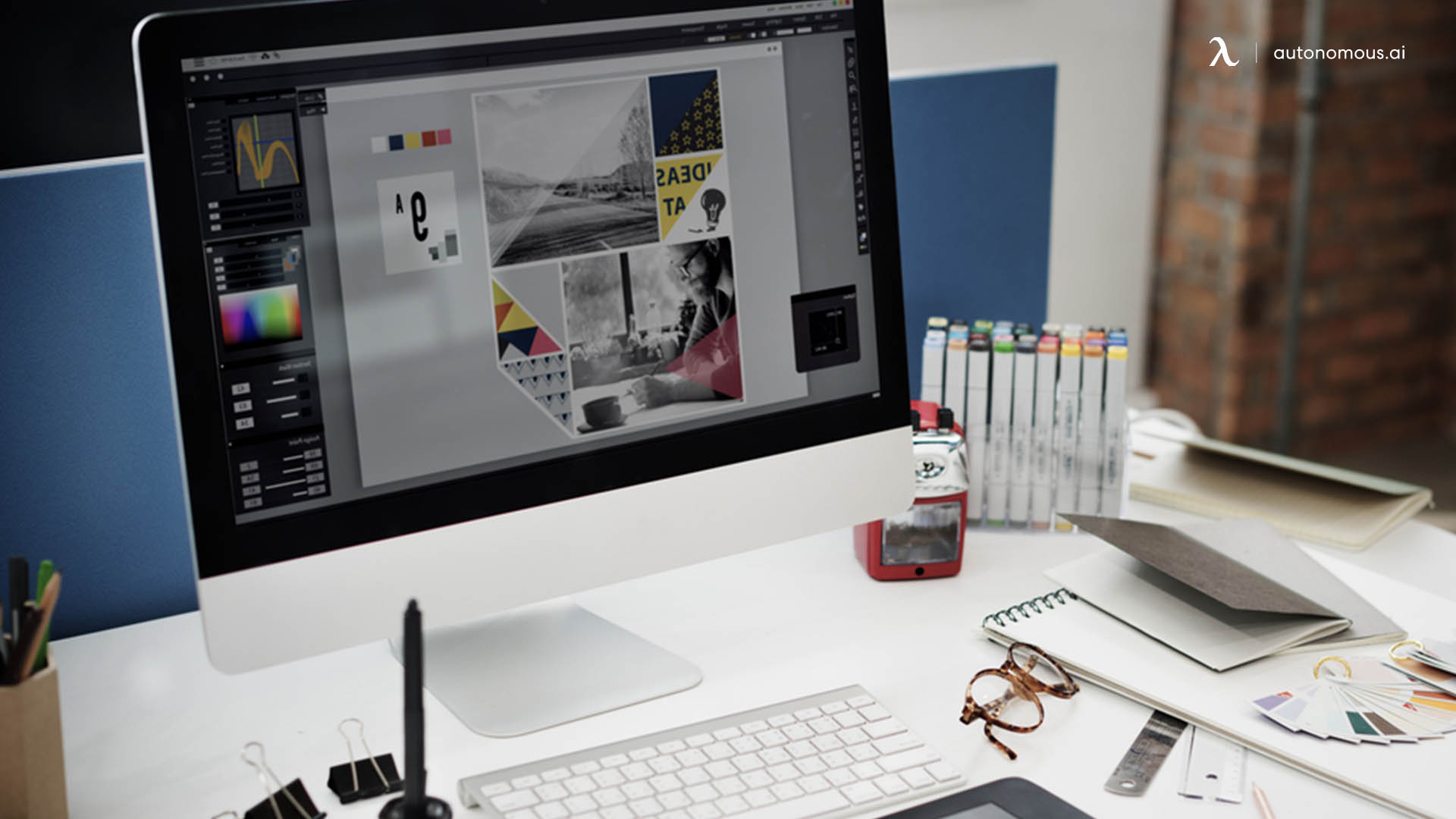Who do graphic designers work for
Graphic designers can work for a variety of clients or employers, including:
- Advertising agencies: Graphic designers can create visuals and graphics for ads, marketing campaigns, and branding materials for advertising agencies.
- In-house design teams: Many companies have their own in-house design teams that create graphics for websites, social media, and other marketing materials.
- Design studios: Graphic designers can work for specialized design studios that focus on creating visual designs for specific industries such as fashion, architecture, or interior design.
- Freelance clients: Many graphic designers work as freelancers and take on projects from various clients. They may work on individual projects, or they may have long-term relationships with certain clients.
- Publishers: Graphic designers can work for publishing houses, creating book covers, layouts, and other visuals for books and magazines.
- Non-profit organizations: Non-profit organizations often rely on graphic designers to create promotional materials for their campaigns and events.
- Government agencies: Graphic designers can also work for government agencies, creating designs for public campaigns, informational materials, and other government-related projects.
Overall, graphic designers work for a diverse range of clients and employers, from large corporations to small businesses and non-profit organizations.
Who are graphic designers and what do they do
Graphic designers are responsible for creating visual concepts, selecting colors, and developing layouts for a variety of products, including logos, brochures, websites, packaging, and advertising materials. They must also consider the target audience and the intended message when creating designs.
Graphic designers use specialized software tools such as Adobe Illustrator, Photoshop, and InDesign to create and refine their designs. They may work independently or as part of a team with other designers, copywriters, and marketing professionals.
Overall, graphic designers play a critical role in communicating information and ideas visually, and their work has a significant impact on the success of various products and services.
Workshop graphic design
 Here are some tips for creating a successful workshop graphic design:
Here are some tips for creating a successful workshop graphic design:
- Define your target audience: Before you start planning your workshop graphic design, it’s essential to identify who your target audience is. Are you targeting beginners or advanced graphic designers? What kind of graphic design work do they specialize in? Knowing this information will help you tailor your workshop to their needs.
- Set clear objectives: Once you know your target audience, you should establish clear objectives for your workshop. What do you want your participants to learn or achieve by the end of the workshop? This will help you structure your workshop and ensure that your participants leave with a clear understanding of the material.
- Choose the right format: Graphic design workshops can take many forms, from traditional classroom-style instruction to hands-on collaborative projects. Consider the goals of your workshop and the preferences of your audience when deciding on the format.
- Prepare the content: Your workshop’s success will depend largely on the quality and relevance of the content you provide. Make sure that the material is well-organized and easy to understand. If possible, include real-world examples or case studies to help participants apply what they’ve learned.
- Provide hands-on practice: Graphic design is a practical skill, so it’s important to give participants plenty of opportunities to practice what they’ve learned. Provide exercises or projects that allow them to apply the concepts and techniques you’ve taught them.
- Offer feedback and support: As participants work on their projects, be sure to offer feedback and support. This will help them improve their skills and feel more confident in their abilities.
- Encourage collaboration and networking: Graphic design is a collaborative field, so it’s important to create opportunities for participants to work together and network. Encourage participants to share their work with each other and offer constructive feedback.
By following these tips, you can create a successful graphic design workshop that provides valuable learning opportunities for your participants.
What do graphic designers need to learn
 Graphic designers need to learn a variety of skills and knowledge in order to be successful in their field. Some key areas that graphic designers should focus on learning include:
Graphic designers need to learn a variety of skills and knowledge in order to be successful in their field. Some key areas that graphic designers should focus on learning include:
- Design principles: Graphic designers need to have a strong understanding of design principles, such as color theory, composition, typography, and visual hierarchy.
- Software skills: They should be proficient in software programs commonly used in the industry, such as Adobe Photoshop, Illustrator, and InDesign.
- Web design: With the growing importance of digital media, it is essential for graphic designers to have knowledge of web design, including HTML, CSS, and UX/UI design.
- Marketing and branding: Graphic designers should understand the principles of branding and marketing in order to create designs that effectively communicate the desired message and image.
- Communication: Communication skills are also crucial for graphic designers, as they need to be able to effectively communicate with clients and team members.
- Time management: Graphic designers often work on tight deadlines, so they need to be able to manage their time effectively and efficiently.
- Industry trends: Graphic designers should stay up-to-date with the latest industry trends and technologies to remain competitive in the field.
Can graphic designers work from home?
 Yes, graphic designers can work from home. In fact, many graphic designers work remotely and freelance from home or other locations outside of a traditional office setting.
Yes, graphic designers can work from home. In fact, many graphic designers work remotely and freelance from home or other locations outside of a traditional office setting.
Advancements in technology and communication tools have made it easier for designers to collaborate with clients and team members remotely. With access to design software, cloud storage, project management tools, and video conferencing, designers can work from anywhere with an internet connection.
However, working from home also requires a certain level of self-discipline and time management skills to ensure that deadlines are met and productivity remains high. It’s important for remote graphic designers to establish a dedicated workspace and routine to maintain a healthy work-life balance.
Will graphic designers be needed in the future
Yes, it is highly likely that graphic designers will be needed in the future. Graphic design is a constantly evolving field and the demand for skilled designers continues to grow. As technology advances, new design mediums and tools emerge, and businesses and organizations seek to establish and maintain a strong visual identity, the need for talented graphic designers will remain.
Moreover, the rise of digital media and online platforms has created new opportunities for graphic designers to work in areas such as web design, user interface design, and digital marketing. Additionally, as society becomes increasingly visual, with more emphasis placed on images and videos in communication, graphic designers will continue to play a critical role in creating compelling visual content.
While the specifics of the graphic design profession may change over time, the core skills of creativity, communication, and problem-solving that are essential to the field are likely to remain in demand in the future.
FAQs about Workshop Graphic Design
Q: What software is commonly used in graphic design workshops? Explore popular design software such as Adobe Creative Suite and Canva to enhance your skills. These tools offer versatility and cater to various design needs.
Q: Can beginners benefit from graphic design workshops? Absolutely! Workshops are tailored for all skill levels, providing beginners with a solid foundation and advanced techniques for seasoned designers.
Q: How do workshops address creative blocks? Workshops guide participants in overcoming creative blocks through collaborative exercises, expert guidance, and a supportive learning environment.
Q: Are graphic design workshops only for digital design? While digital design is a focus, workshops often cover both digital and print design, ensuring a well-rounded understanding of graphic design principles.
Q: What is the role of color theory in graphic design workshops? Color theory is a key component, teaching participants to strategically use colors for emotional impact and effective communication in their designs.
Q: Can graphic design workshops help advance a design career? Yes, attending workshops enhances skills, keeps designers updated with industry trends, and can significantly contribute to career advancement.
Conclusion
Embarking on a Workshop Graphic Design journey opens doors to a world where creativity knows no bounds. Whether you’re a novice seeking foundational skills or an experienced designer aiming for mastery, these workshops are the gateway to elevating your graphic design prowess.

